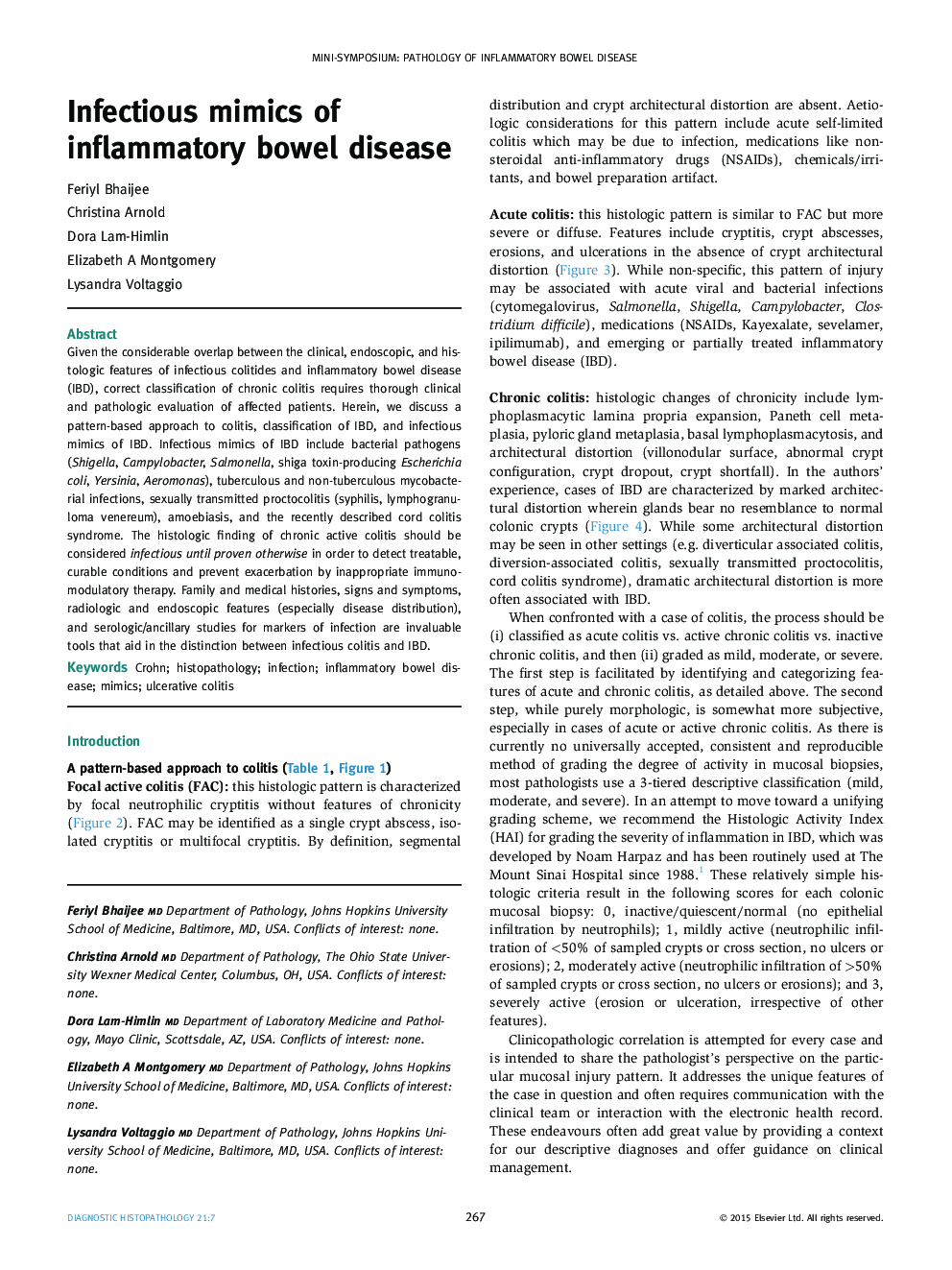| Article ID | Journal | Published Year | Pages | File Type |
|---|---|---|---|---|
| 4130984 | Diagnostic Histopathology | 2015 | 9 Pages |
Given the considerable overlap between the clinical, endoscopic, and histologic features of infectious colitides and inflammatory bowel disease (IBD), correct classification of chronic colitis requires thorough clinical and pathologic evaluation of affected patients. Herein, we discuss a pattern-based approach to colitis, classification of IBD, and infectious mimics of IBD. Infectious mimics of IBD include bacterial pathogens (Shigella, Campylobacter, Salmonella, shiga toxin-producing Escherichia coli, Yersinia, Aeromonas), tuberculous and non-tuberculous mycobacterial infections, sexually transmitted proctocolitis (syphilis, lymphogranuloma venereum), amoebiasis, and the recently described cord colitis syndrome. The histologic finding of chronic active colitis should be considered infectious until proven otherwise in order to detect treatable, curable conditions and prevent exacerbation by inappropriate immunomodulatory therapy. Family and medical histories, signs and symptoms, radiologic and endoscopic features (especially disease distribution), and serologic/ancillary studies for markers of infection are invaluable tools that aid in the distinction between infectious colitis and IBD.
